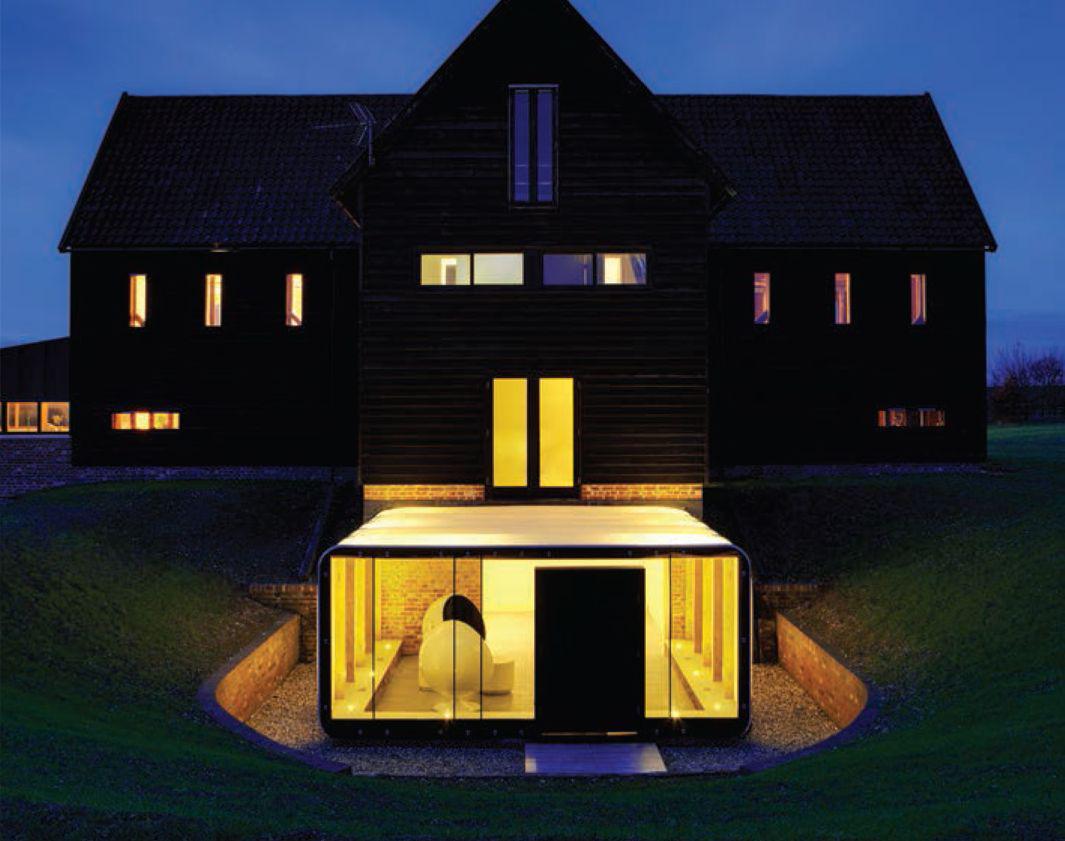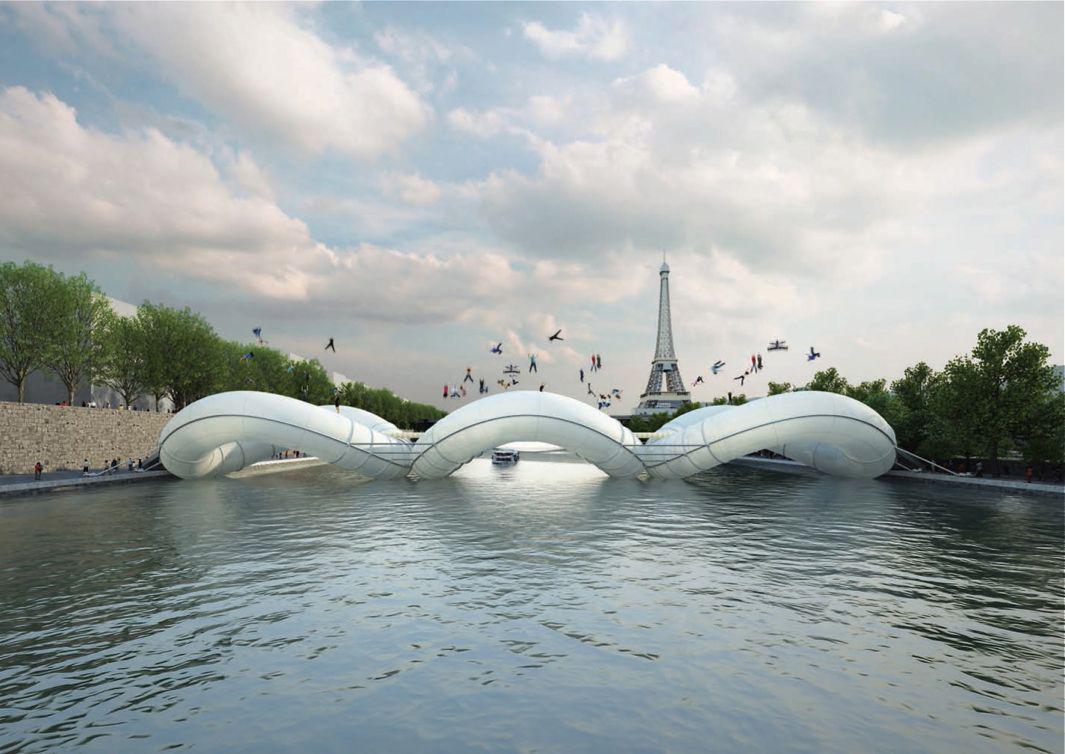Air is invisible, impossible to draw, and easy to take for granted, but forward-thinking architects and designers have long experimented with this most ephemeral of building materials as a magical ingredient for creating lightweight, portable, flexible, pneumatic structures that include inflatable buildings, bridges, sculptures, furniture, and more.
Air Structures, a new book out next month by William McLean and Pete Silver, who both teach at the School of Architecture and the Built Environment at the University of Westminster, shows the potential of pressurized air as an inexpensive and renewable building material. They survey innovative inflatable structures from the past several decades and consider the use of air-based technology to create air beam structures and facilitate construction methods such as air-inflated steel, aerated concrete, and blow molding that make it possible to build in ways that would be impossible using conventional means.

Courtesy of Laurence King
This compact, informative book aimed at architects and designers is full of enlightenment and inspiration for those curious about how architects and designers approach their work.
Architect Oskar Zieta and materials scientist Philipp Dohmen, both researchers at Zurich’s Swiss Federal Institute of Technology, welded thin sheet metal together along seams before inflating it with high-pressure air through a pre-installed valve to create the lightweight but remarkably strong Plopp stool.

Courtesy of Laurence King
This test bridge designed by Rolf Luchsinger and Mauro Pedretti in Switzerland was built using pneumatic technology inspired by the Tensegrity structures of Buckminster Fuller and the floating compression ideas of artist Kenneth Snelson. Lightweight, inexpensive, easy-to-install air beams have the load-bearing capacity of conventional steel girders, allowing them to be used as bridges, temporary enclosures, and roofs.

Courtesy of Laurence King
A mobile scientific laboratory made of pneumatically inflated air beams and nylon mesh includes an overnight shelter and storage facilities. It is designed to be air-lifted along with personnel by hot balloon and deposited on water or, as below, the canopy of a rain forest.

Courtesy of Laurence King
AirClad from designer Nick Crosbie uses low-pressure inflated air cells connected to structural ribs that create an armature for an inflated wraparound skin that can be used to create garden offices, house extensions, or pop-up pavilions.

Courtesy of Laurence King
